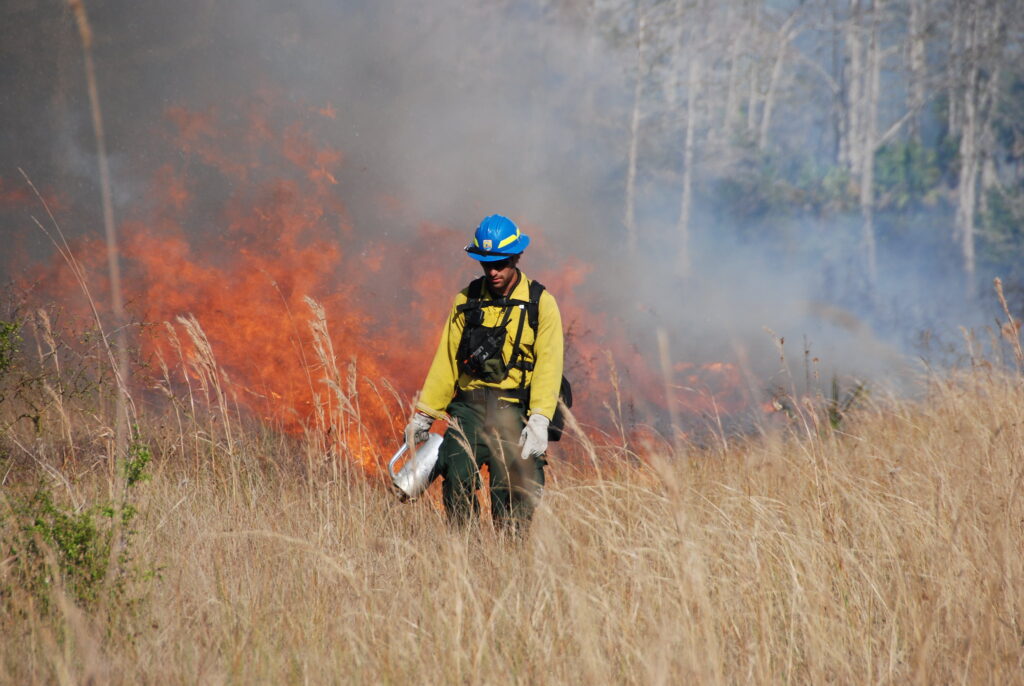This article was originally published by the Frontier Institute.
The debate over the future of our forests continues. The Biden Administration recently released a new plan to increase active forest management, but an environmental coalition has launched an effort to preserve mature forests through strict land-use designations and logging bans to aid carbon sequestration.
While healthy forests sequester carbon, mismanaged forests have a heightened risk of catastrophic wildfire, which releases carbon. Last summer, fires in the West released 130 million tons of carbon dioxide, and carbon-offset forest projects, including some by Microsoft and BP, were destroyed in wildfires.
The challenge is to manage for healthy forests that sequester carbon and don’t go up in flames. Tools including prescribed burns, selective timber harvest, underbrush thinning, and weed control can help. Preservationist approaches to forest management make it more difficult to apply these tools. Instead, protecting forests will require removing bureaucratic and legal barriers to conducting active forest management work, not adding more.
The new plan, “Confronting the Wildfire Crisis,” acknowledges the need for active forest management and outlines a strategy for working with partners to increase forest health treatments by up to four times current levels in the West. It calls for $50 billion over the next decade for forest thinning, prescribed burning, and other hazardous fuels treatments to reduce extreme fire risks, and recognizes that “large and severe wildfires are threatening the ability of forests to store carbon in huge old western trees.” Perhaps most importantly, it’s a strong signal that active forest management, and preventing fires rather than suppressing them, has become a bipartisan issue in Washington D.C.—a much-needed shift.
The plan is a step in the right direction. The U.S. Forest Service has identified 63 million acres of national forests at high risk of extreme wildfires, yet the agency treats just two million acres annually. America’s history of fire suppression has radically altered the condition of forests, resulting in larger, more destructive wildfires that threaten communities, pollute air, degrade water quality and destroy wildlife habitat. Drought and a warmer climate are making the problem worse. Today’s megafires burn so intensely they can threaten forests’ capacity to regenerate.
Fixing America’s forests will ultimately require more than just money. It will require cutting through the regulatory red tape preventing many forest restoration projects from starting. Activists opposed to logging often abuse federal laws such as the National Environmental Policy Act and the Endangered Species Act to stall forest-thinning projects. In California, for example, opponents held up a 9,000-acre project for a decade claiming it would harm endangered spotted owls, only to have the forest burn down in 2021 during a fire that destroyed the birds’ habitat.
Overcoming these challenges will be difficult. Forest projects can take years to be approved, and agencies must prepare extensive environmental reviews that can withstand litigation challenges from opponents. The Administration’s plan acknowledges this—they are choosing to focus efforts during the first two years on forest-thinning projects that have already been through environmental analysis but lack funding. Congress should free more restoration projects from the burdensome environmental review requirements and reexamine the environmental review process that favors inaction over active management.
Getting the needed forest work done will require state and private partners. While the Administration is right to emphasize the need to work with partners across the West to reduce fire risk, federal contracting rules often prohibit the Forest Service from entering into long-term contracts and cooperative agreements needed for large-scale restoration work. In order to increase the Forest Service’s ability to partner with others, Congress needs to enhance the flexibility for restoration contracts and cooperative agreements.
It’s time to get proactive about forest management. The focus on active restoration instead of strict preservation will go a long way to confront the wildfire crisis, but only if red tape and regulatory challenges don’t interfere.




